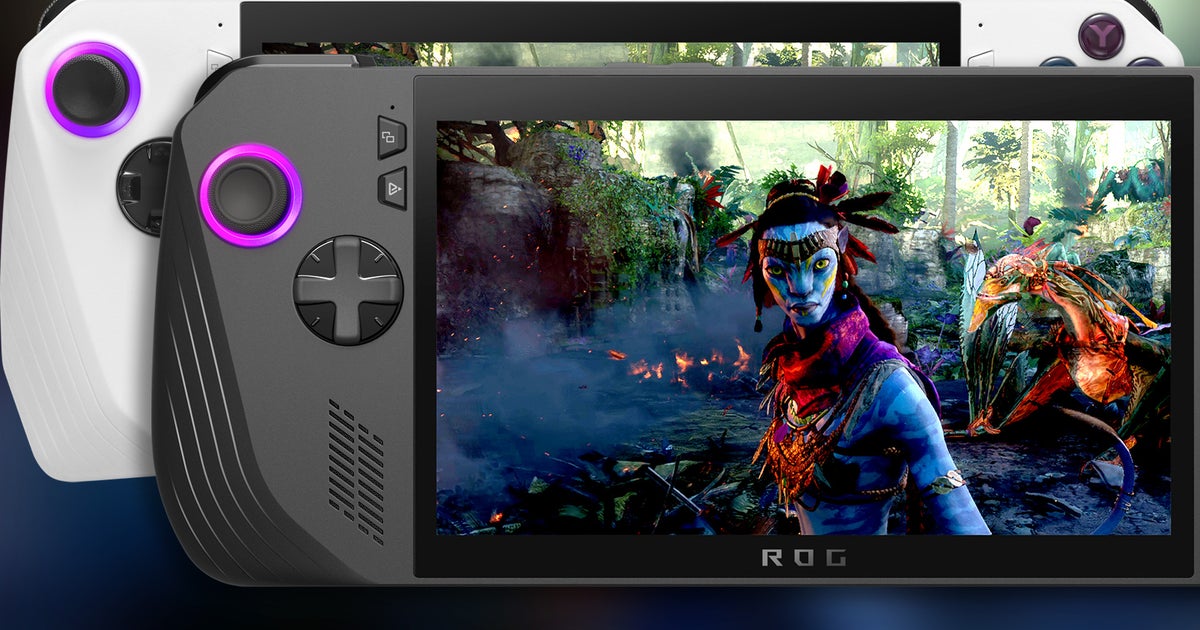Returning to Elden Ring two years on, the Shadow of the Erdtree expansion gives us a fresh chance to reassess developer FromSoftware's work and see how the game now runs on PS5, Series X, Series S and PC across the new Shadow Realm map. The original game's launch exhibited a string of performance issues on PC and consoles, so the hope is that this expansion offers a fresh opportunity to address these issues.
The big questions then: in the intervening years, has FromSoftware improved the game's performance on console? Do any of the game's modes - like the frame-rate, quality and ray tracing modes on PS5 or Series X - deliver anything close to a locked 60fps yet? And as for PC, what's the current state of Elden Ring's optimisation and has its long-standing stutter issues been solved?
There's no doubt that Shadow of the Erdtree is a beautifully crafted extra slice of Elden Ring, adding around another 50 percent to the length of the main adventure via an 18GB download. The expansion's world design and combat are standout, but in terms of improving game's technical polish - in optimising the experience on console and PC - it's fair to say that FromSoftware is far from addresing all of the game's technical failings.
Starting with PS5, Shadow of the Erdtree's new region sadly does not fix the frequent drops below 60fps, even running in the game's frame-rate mode that renders at a dynamic 1512p to 2160p resolution. Around the Gravesite Plain opening area we're often running in the 50s, with the silver lining being that these drops are disguised well enough on displays with variable refresh rate (VRR) support. The issue is that other areas have greater potential for frame-rate drops below the 48fps lower limit that PS5's VRR can handle, such as the drop to 40fps when spawning at the gates of Castle Ensis or battling roaming golems. At these moments, PS5 falls outside the VRR window, and you'll notice judder. Meanwhile, those without a VRR-capable display will see constant judder as the frame-rate wavers up and down the graph.
Beyond the frame-rate mode, there are quality and ray tracing (RT) modes. Using the new Shadow Realm region as a kind of benchmark, the quality mode renders at a native 4K, while the RT mode continues to run at 1620p - with ray traced shadows and ambient occlusion added. Sadly, optimisation of these modes has not changed since we last looked at them. On a matyched path in the Gravesite Plain, the quality and RT modes often run at a similar 30-40fps range. VRR isn't viable here either. Each falls far below the frame-rate mode's reading, and might as well be running with a 30fps cap - if only it were frame-paced evenly.
Once we approach more complex structures, like castles, dungeon interiors, the quality and ray tracing modes splinter apart. The design of Castle Ensis in particular demands a heavier use of ray-traced ambient occlusion (RTAO), and as a result, the RT mode falls lower, locking at near the 30fps line. Just like in the base game, while the visuals unlocked by the RT mode do look good, we still pay an incredible price for it in performance. More glaringly, this is the only mode where we easily encounter drops under 30fps, which truly gets in the way of Erdtree's playability. It's hard to recommend, and likewise, the quality mode rendering at 4K is a hard sell, given it often runs in the 35-45fps.
In short, seemingly no good progress has been made on PS5 after two years. Bearing in mind that developer FromSoftware has since produced Armored Core 6 with similar frame-rate issues on console, it's surprising to see that lessons are simply not being learned. So what's the solution? Well, allowing the game to drop to a lower internal resolution might help, as the PS5 is often right at the bottom of its 1512p to 4K range in the frame-rate mode. Something is amiss here in the DRS setup. In theory, if this was changed to 1260p or even 1080p, GPU load might be lessened and a tighter lock to 60fps would be achieved.
There's a way to prove the viability of this method, too. Just as with the launch version of Elden Ring and Armored Core 6, you can run the PS4 app version of the game on PS5 hardware to get lower settings across the board, including resolution. This forces Elden Ring to render at a checkerboarded 1800p - or 1600x1800 essentially - with an obvious impact to impact quality, alongside grass density and shadow quality cutbacks. However, the result is a much smoother 60fps. Unfortunately, this method isn't a practical one for most Shadow of the Erdtree players, as there's no way to access your PS5 save data in the PS4 version of the game. All that progress leading up to accessing the Shadow Realm will need to be repeated. Ultimately, FromSoftware needs to administer its own proper optimisation to the PS5 code, but it's clear that the PS4 app shows a working solution.
Jumping across to Series X, we see a similar situation - Shadow of the Erdtree's early areas still run at between 45 and 60fps, even using the best-case frame-rate mode. Interestingly, Series X often runs at a lower frame-rate when compared directly to PS5, with a 5-8fps delta being typical in PS5's favour. Again then, it's apparent that performance optimisation was not a huge priority in the design of the expansion. Where Series X does have an advantage, as before, is in its more flexible handling of VRR. The range here is wider, working between 40 and 60Hz versus the 48 to 60Hz range on PS5, so Series X is able to handle frame-rate drops more gracefully.
However, if we switch to the RT mode on Series X, it falls beneath even this more generous lower bound. Sub-30fps drops are very possible, especially in battles where you're adjusting the camera to look up and down. The dynamic resolution system is being caught off-guard as it tries and fails to adjust in time to wavering GPU load, causing major sub-30 lurches. We see poorer performance than PS5 in the quality mode too on Series X. Given this, the frame-rate mode is really the only option we can recommend, with the wider VRR window making up for some of the frame-rate deficit against PS5.
Last up on the console front is Series S. The frame-rate mode continues to run at a dynamic 1440p, and often at the lower end of the spectrum at 1008p. Sadly, frame-rates are usually lower than on Series X, at ~45fps in the Gravesite Plane segment, so there's always the risk that you'll fall out of the VRR window. There's no RT mode, which is probably the right call given the performance penalty it imposes elsewhere, while the quality mode is locked to 1440p but often runs in the 30 to 40fps range. To sum up, Series S continues to offer the weakest performance of the current-gen consoles, even with the cutbacks in resolution.
Moving onto PC, it's clear that Shadow of the Erdtree hasn't changed the technical characteristics of Elden Ring on PC in a meaningful way. The game performs much as it did when we last looked at it soon after launch, with a maximum frame-rate of 60fps, no ultrawide support, shadow pop-in with RT features enabled and no support for modern upscalers like FSR2, DLSS or XeSS.
 The PC situation - as covered by Alex Battaglia in the video - is unchanged since Elden Ring's launch, with traversal hitches still interrupting play.
The PC situation - as covered by Alex Battaglia in the video - is unchanged since Elden Ring's launch, with traversal hitches still interrupting play.
Most gallingly, the game still suffers from consistent frame-time spikes due to CPU bottlenecking when just moving through the game world. On a lower-end system with a Ryzen 5 3600 and RTX 4060 running on our optimised settings, 33.3ms frame-time spikes are commonplace. On a higher-end system, such as a Ryzen 7 7800X3D, these frame-time spikes are lessened but still present - a strange state of affairs given the massive performance potential of this processor. There are also rarer but extreme frame-rate drops all the way to 0fps, which have been reported by many Elden Ring players online and we've experienced much the same on our Ryzen 5 3600 and Core i9 10900K. Overall, it's disappointing to see no real progress on PC over the past few years.
With the issues on console and PC in mind, it's worth mentioning that Elden Ring has been a huge financial success for FromSoftware, and it feels odd that money has not been re-invested over the last two years to improve the game's technical polish on PC or console. This critique comes from a place of genuine respect for what FromSoftware has achieved in the Souls series; few developers match this studio's craft in world-building and 3D combat. But on every platform, we're seeing a developer that ignores key technical issues time and again.
Despite the frame-rate challenges on console, which more or less necessitate the use of modern VRR-capable displays for a good experience, I'd daresay the PC situation is worse, especially for a first-time player encountering these performance lurches. Regardless, Shadow of the Erdtree's release once again reminds us that obvious, persistent issues in the studio's output are being overlooked.

 3 days ago
27
3 days ago
27











